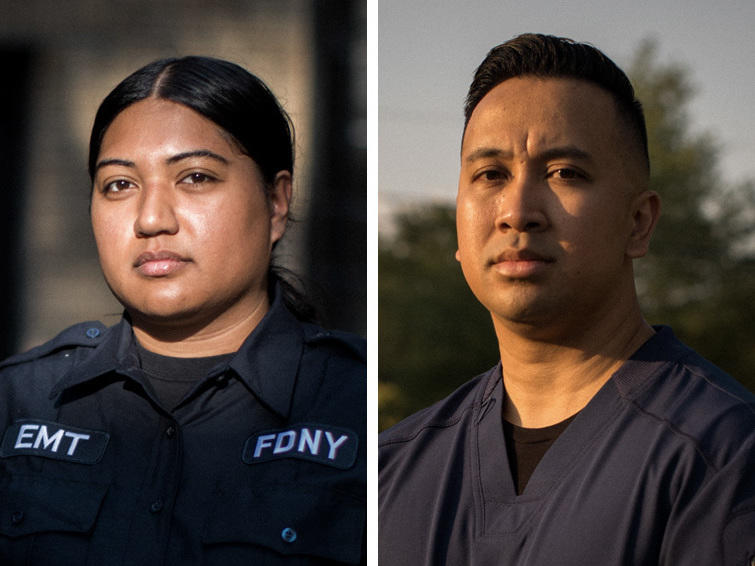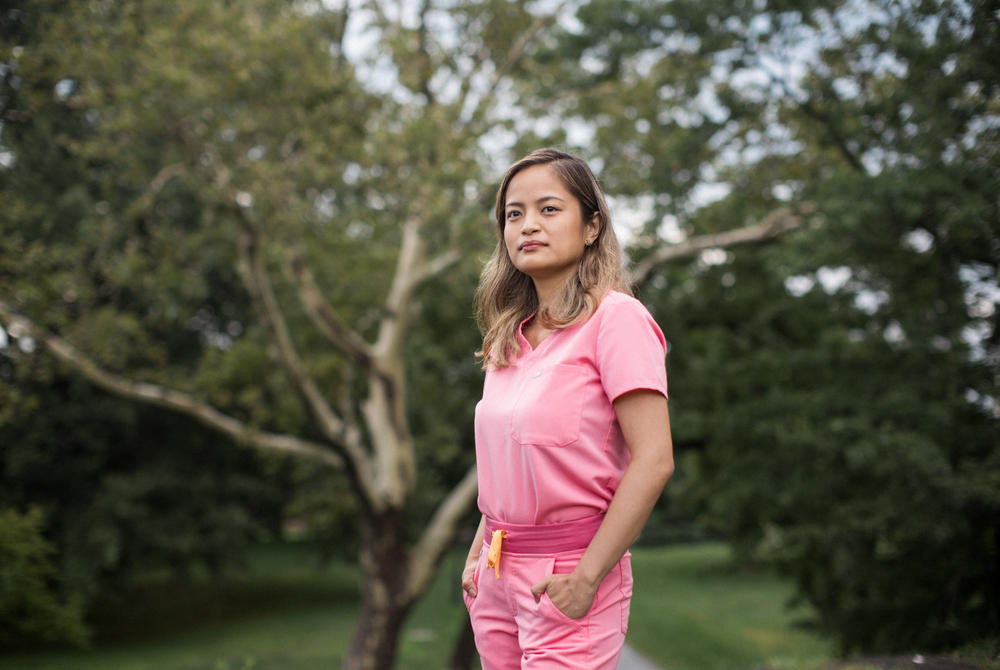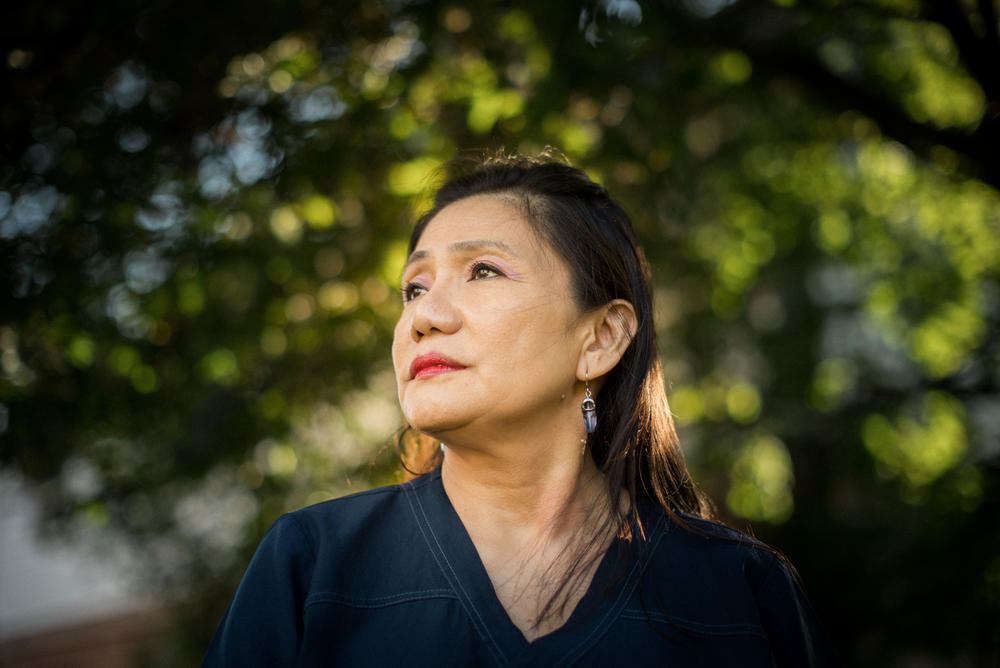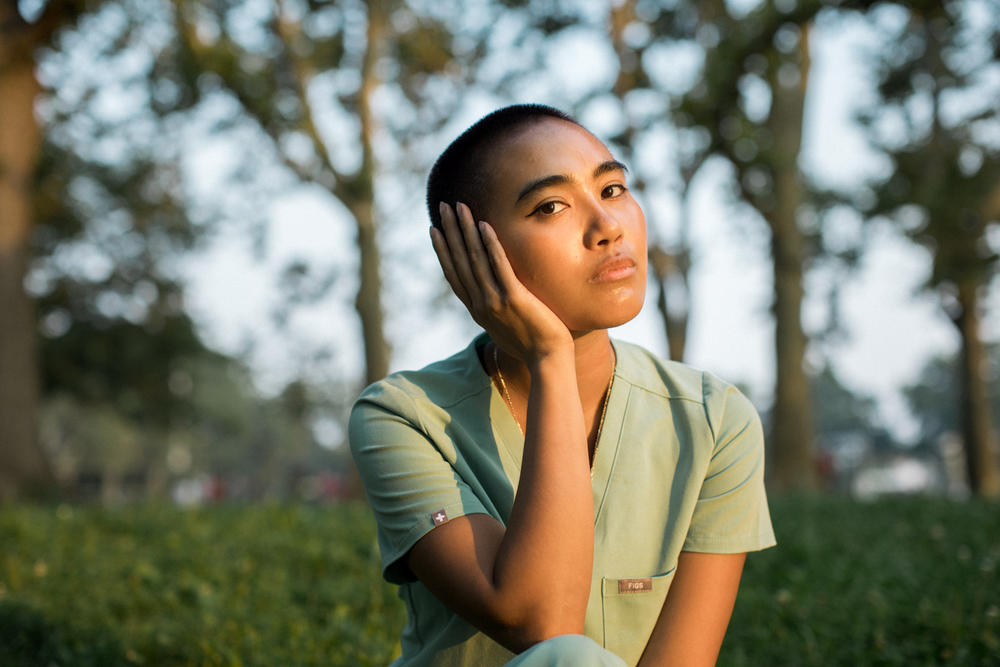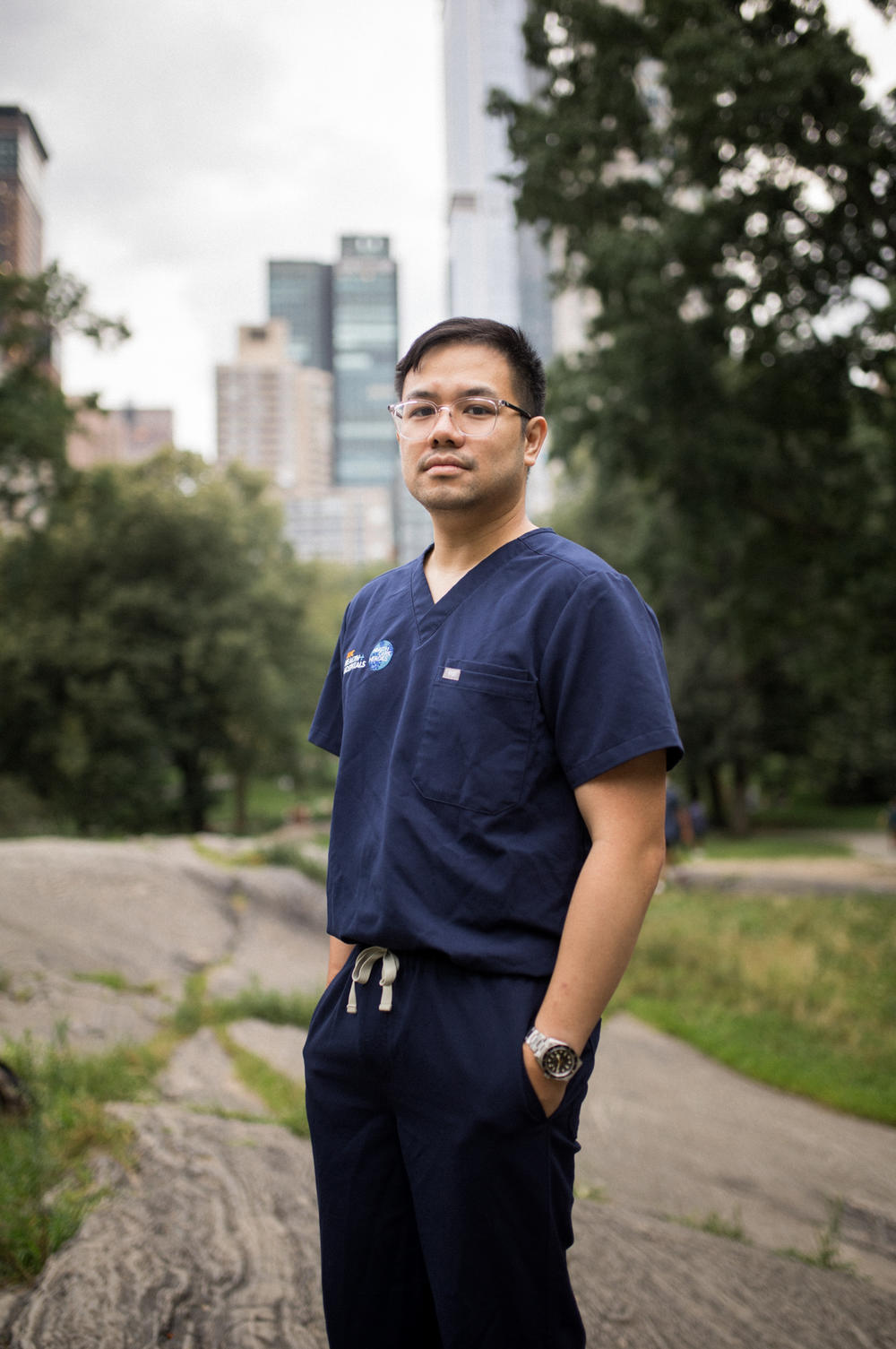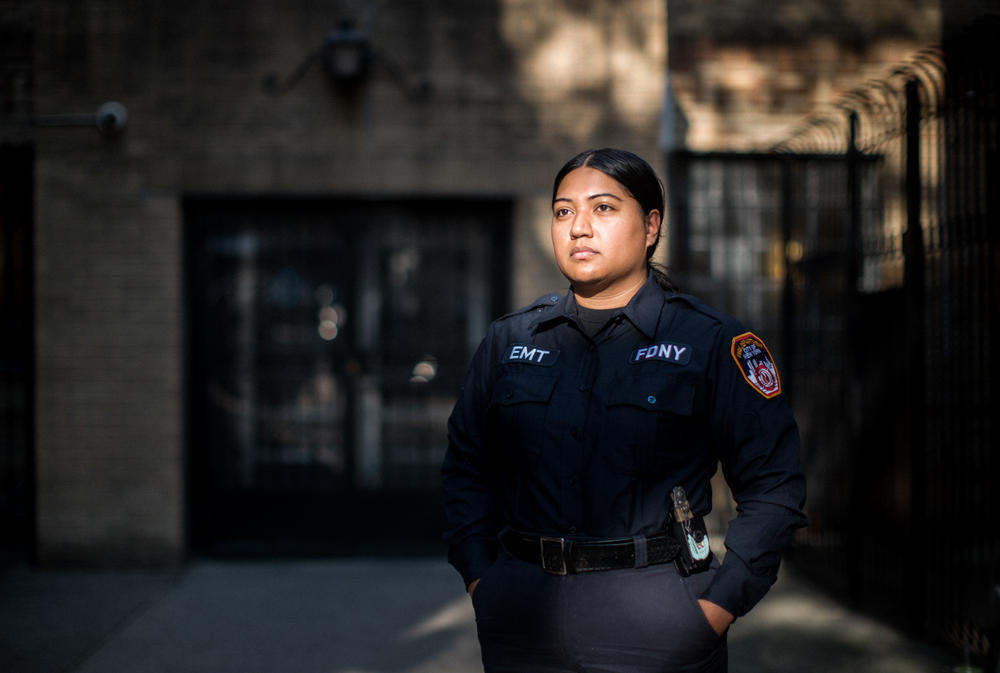Section Branding
Header Content
Filipino American health workers reflect on trauma and healing on COVID's frontlines
Primary Content
In the spring of 2020 Glenn Magpili, 42, got sick with COVID. The first wave of the pandemic had flooded New York area hospitals and Magpili, an emergency room nurse in Manhattan, fell ill in the same hospital where he'd been caring for patients sick with the coronavirus. Then, he was intubated.
"When I woke up, I thought I was just asleep for a couple of days," he recalls. "They told me it was almost four weeks."
Magpili recovered but counts himself "one of the lucky ones. There were so many Filipino nurses who got sick," he says.
I work as a nurse, too — I was born in Manila and immigrated to the U.S. with my family when my mom was recruited to teach here. I was 16. My interest in caring and service led me to nursing; my interest in storytelling led me to photography.
For Filipino Americans like Magpili and me working in all aspects of health care, being so close to a new and devastating virus in the early days of the pandemic has taken a disproportionate toll.
Filipinos and Filipino Americans make up just 4% of registered nurses in the U.S., but account for nearly a third of all COVID-related deaths among registered nurses, according to one study.
The history of Filipino nurses working in the U.S. goes back many decades as Americans established U.S.-style nursing schools in the Philippines during the U.S. occupation and colonization of the early 1900s. When the U.S. has faced nursing shortages after World War II and more recently, Filipinos have answered the call.
And it's not just nurses. Doctors, respiratory and physical therapists and other health workers from the Philippines have come to the U.S. for medical training and jobs. When the pandemic happened, I knew my Filipino community would be heavily affected. Many of us ended up on the front lines caring for critical COVID-19 patients while watching colleagues and family members fall sick.
I want Filipinos to be seen beyond the statistics. I want people to see their faces, hear their diverse stories and learn about their sacrifices. It is important. These are people who have always contributed to the health and wellness of this country.
Here are some of their stories from the first devastating surge in New York City — and how they made it through. We've edited the conversations for length and clarity.
Dr. Bea Leal, 33, internal medicine physician
I grew up in the Philippines in a family of doctors. My mom, my mom's sisters, my cousins and my sister are in medicine. We don't know how to do anything else.
I did residency here in the U.S., knowing it won't be easy. I was thinking there are better working hours and better compensation here in the U.S. — so, no matter what happens, it won't be as difficult as what I have experienced in the Philippines.
When the pandemic happened, it was unprecedented. You are fearing for your own life and for the life of your colleagues. You see the people around you — your colleagues were getting sick, were critical or even died. So I wondered, should I go back to the Philippines? Should I leave New York? Because things were so bad here compared to the rest of the world. Is it still worth it to sacrifice my life? Is it for a greener pasture? Is it for the opportunity to train abroad? Is it worth it to not see my family again?
Jona Caparas, vascular access nurse
The heartache and helplessness I felt when my own brother was brought to the hospital was like no other. He was found passed out in his driveway and was diagnosed with a subarachnoid bleed and tested positive for COVID-19. All I could do was get text updates because I couldn't leave my patients who were also dying and needed lines so they could survive. My brother died two days later. Around that time, five of my friends died as well.
After my brother died, things took a toll on me. I was crying and my glasses were fogging while I was trying to insert lines. It's tough. And then, of course, patients were dying in front of you. That was the most difficult time for me. It's still difficult. My brother used to drive from New Jersey and we would play our music, and then suddenly COVID. And then suddenly no more of that.
I'm not the same as before. COVID it takes a toll on you. Sometimes you forget names. You forget words. And it's not just me. I think it's the trauma in general.
My friends and I, all nurses, started seeing each other. We started meeting at my house just to eat and talk. We started dancing together to release stress. We also talked with each other. When my brother died, they were there for me. They were reaching out to me all the time.
If you see Filipino nurses on the floor, you give each other a look. There is an understanding of what we go through together.
Karen Cantor, 27, intensive care registered nurse
My floor does not have many Filipinos at all. So I was like, where are all my people? Someone told me when you're a nurse, you will have Filipino colleagues bringing food every other day. I don't have that.
We had nurses get sick. We had nurses die. We had family members of nurses die. We had to take care of their family members. I wrote my will last year. It was cathartic — at least you had a plan. I needed a sense of control.
I got my neck tattooed. I shaved and colored my head. I wanted to normalize expressing myself. I want to normalize not feeling like I have to present a certain way at work — because I know I am good at my job.
I didn't start seeing a therapist until like the beginning of this year. I don't think there were openings by the time I was looking. So, now I've started seeing a therapist, and unpacking, like, all of the traumas of last year.
Dr. Nicolo Firme, 37, internal medicine physician
It's hard. For other diseases, at least you can give them answers, but during COVID we had no answers. Are they going to get better? Does this treatment work? When is my dad going to go home? When is my mom going to go home? We had no answers. Basically we would tell them that we were doing everything we can with what we know, but we had no definite answer for anybody.
It makes you feel like you're exploring a new area of medicine — and for anybody that's a scary feeling. It was like going into a dark room and feeling your way through the area. And we would give what we had, even if we were not sure if it would help or not.
I'm training here now, but I also trained in the Philippines. The work ethic — how hard it is and the long work hours — I learned from the Philippines. So I was able to carry that over here. That is what gave me the resilience to get through the worst of COVID.
Karen Shoker, 27, emergency medical technician
The hardest part was being worried for your family. I didn't even care if I got sick, but I feared bringing it home because my mom is not young and has other underlying conditions.
I got sick in April — the same time as my aunt and uncle. One day, I just spoke to my aunt on FaceTime. The next day, the doctor let me know they were intubating her. Then that same day, I got a call saying she passed away. At the same time, my uncle was in the hospital because of a stroke. I had to tell him that his wife passed away. I was also so sick. For almost a whole month, I had no energy. I felt so useless. My aunt's gone. My uncle is sick.
Never take life for granted. As much as possible, spend whatever time you have with your loved ones, making memories, and always make sure to tell your family members that you love them. That's one thing I wish I had told my aunt before she passed away. And that's something that I know she knows — that I love her. I wish I had more time with her before she was gone. She was loved.
Rosem Morton is a nurse and freelance photographer based in Baltimore, Md. This project was commissioned and produced by Photoville in partnership with the Friends of the Philippines. An exhibition of the work is currently on display until Dec. 1, 2021 in Brooklyn Bridge Park in New York.
This NPR.org story was produced by Meredith Rizzo with editing by Deborah Franklin of NPR. Design and development by Rina Torchinsky of NPR.
Copyright 2021 NPR. To see more, visit https://www.npr.org.
